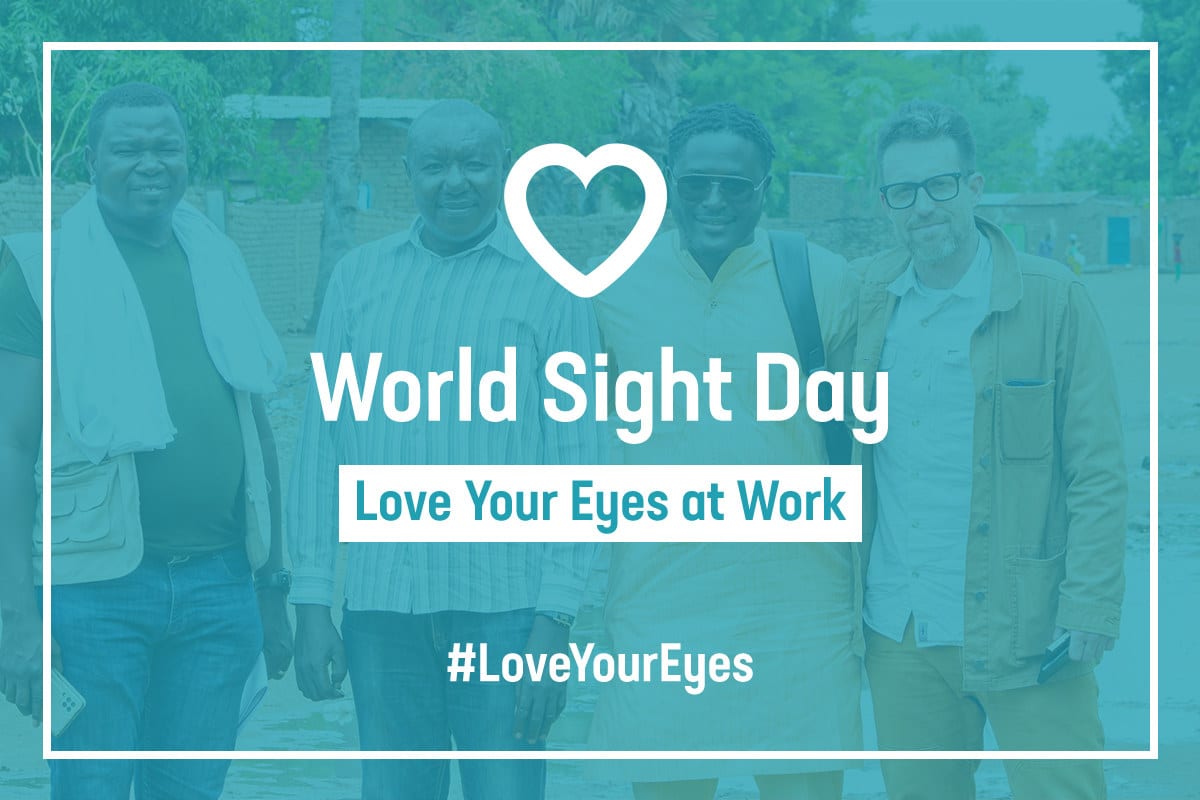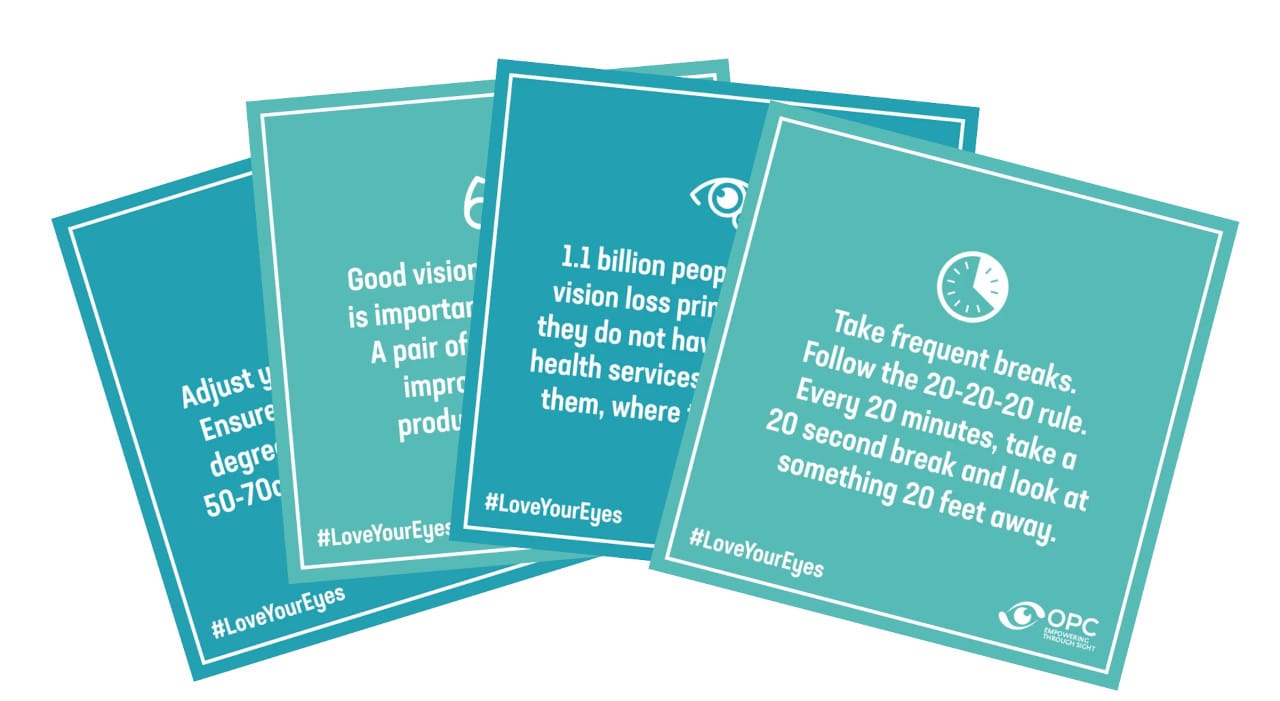On October 12th, the world will have its eyes set on World Sight Day – an annual day to promote awareness of vision loss prevention and treatment. This year, we join The International Agency for the Prevention of Blindness (IAPB), plus all of the people making a difference in Francophone Africa including the ministries of health, national neglected tropical disease and eye-care programs, hospitals, schools, ophthalmologists and optometrists, and community healthcare personnel to draw global attention to the significance of eye care within the workplace.
Together, we’re inspiring employers to establish eye health initiatives as standard protocol and advocate for eye health practices that will enhance the well-being, safety, and productivity of their employees.
Did you know? Over 160 million individuals that have moderate to severe vision loss are of working age. We often associate vision impairment with individuals beyond retirement age. While the risk of vision loss does increase with age, no one is immune to vision problems.
How to Love Your Eyes At Work
The time to protect your eyes with preventative measures is now! We’ve shared what you can do to preserve your sight before – but this month, we’re drawing your attention to ways to Love Your Eyes At Work.

Follow the 20/20/20 rule
Digital eye strain is becoming an increasingly common challenge. To combat eye strain, take a 20 second break, every 20 minutes, and look at an object 20 feet away.
Reduce eye strain
Do you have 5 minutes? That’s all it takes to check your workplace setting and prevent eyestrain, thanks to the following 10 prompts provided by IAPB.
If you answer no to any of these prompts and need help correcting your setup, ask your employer to provide you with occupational health and safety measures to protect your vision.
- My chair supports my entire body, and my feet are adequately rested on the floor.
- My monitor is slightly below eye level, helping my eyes to look downward. Note that the recommended placement is 15-20 degrees below eye level.
- My screen is 50-66 cm away from my eyes.
- My screen can tilt and swivel and has inbuilt glare filters.
- My screen is tilted 10° to 20° away from me.
- My screen is positioned away from glare of any lighting or windows.
- My room is well lit.
- My screen is dust free.
- My blue light glasses are within reach.
- I have increased fonts and zoomed in to avoid bending or moving closer to my screen.
Did you know that clear vision can help improve your productivity by 22%? If you are still straining after addressing these prompts, make an appointment with your optometrist.
How to Stay Engaged and #LoveYourEyes
Follow us on Facebook and LinkedIn for helpful information, tips and tricks to reduce eyestrain, and stories about the life-changing work we do to ensure the human right to sight.
Empower Your Network: Share our #LoveYourEyes Resources!
Check out our #LoveYourEyes At Work resources below for information to promote eye health. There are informative graphics, helpful messages, and valuable tips to help everyone prioritize their vision at work. Whether you’re in the office, working from home, or managing a team, these resources will empower you to make positive changes.
Download #LoveYourEyes At Work resources now and share with your network. And here, you can download social media post suggestions. Together, we can make a significant impact on eye health awareness!
